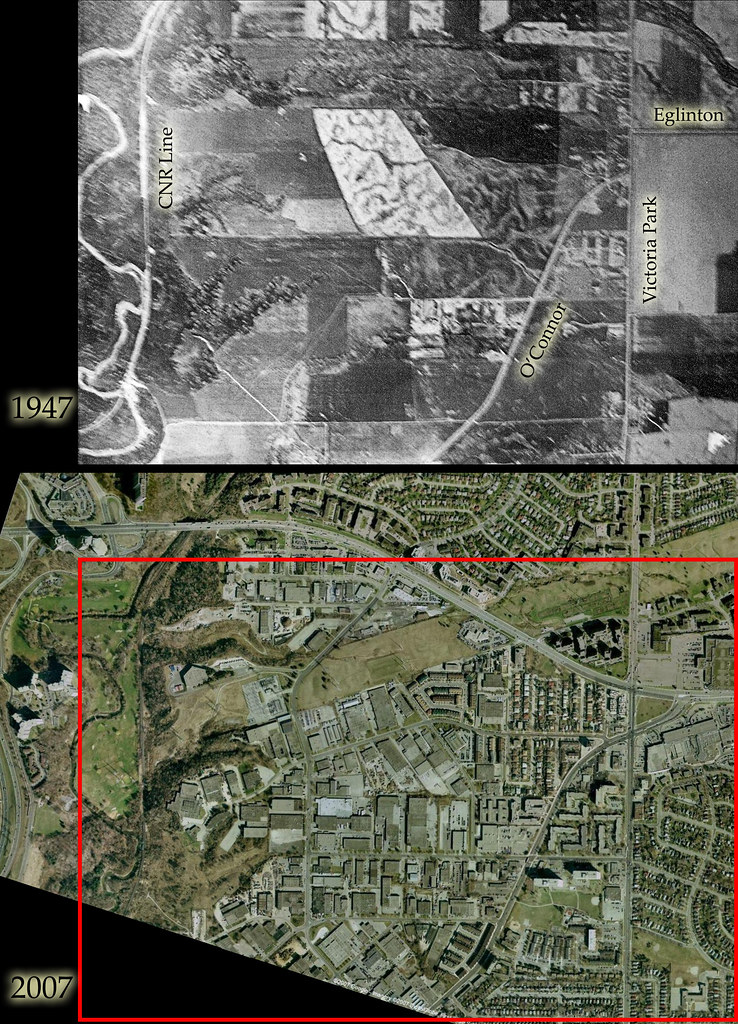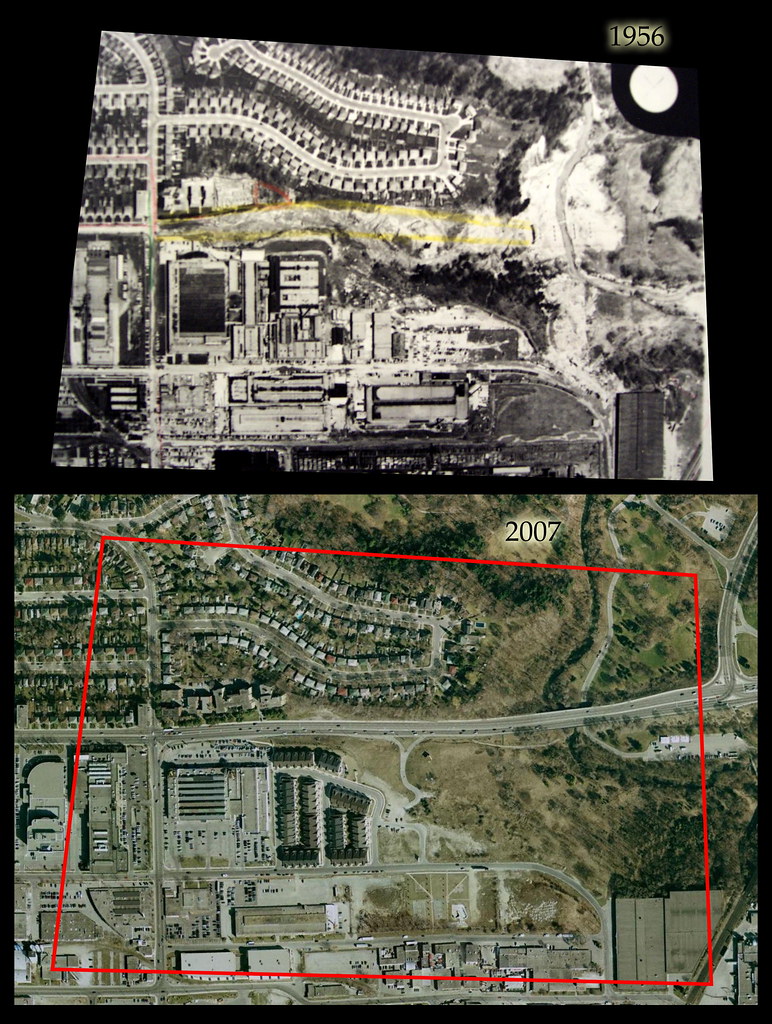Lone Primate
Active Member
Someone asked a few days about about shots of Eglinton and Don Mills. Well, I don't have that specifically, I don't think... nothing about it every got me looking it up... but I have shots of the ends of Eglinton that were connected in the mid-50s by what was then termed the "Eglinton Avenue Extension".

This is the west end of Eglinton in 1947... it's one of the plates you can't freely access anymore, so I'm glad I took this when I did. Eglinton is dead centre on the horizontal, and ended, at the time, at Laird, though you can see it's been roughed in Brentcliffe in conjunction with the expansion of the subdivision. To the east is the Don River. Leslie Street didn't come down to Eglinton at the time as, of course, there wasn't an Eglinton to get to yet.

At the other end, Eglinton ended at Victoria Park. This, again, shows a view from 1947, contrasted with a contemporary view. The red-bordered area shows the overlap.

Back to the other end. By 1956, the extension itself was under construction. You can see the abutments for carrying the bridge across the Don are already in place. A map I have dating from 1959 shows the extension complete and in use.

This is the west end of Eglinton in 1947... it's one of the plates you can't freely access anymore, so I'm glad I took this when I did. Eglinton is dead centre on the horizontal, and ended, at the time, at Laird, though you can see it's been roughed in Brentcliffe in conjunction with the expansion of the subdivision. To the east is the Don River. Leslie Street didn't come down to Eglinton at the time as, of course, there wasn't an Eglinton to get to yet.

At the other end, Eglinton ended at Victoria Park. This, again, shows a view from 1947, contrasted with a contemporary view. The red-bordered area shows the overlap.

Back to the other end. By 1956, the extension itself was under construction. You can see the abutments for carrying the bridge across the Don are already in place. A map I have dating from 1959 shows the extension complete and in use.




